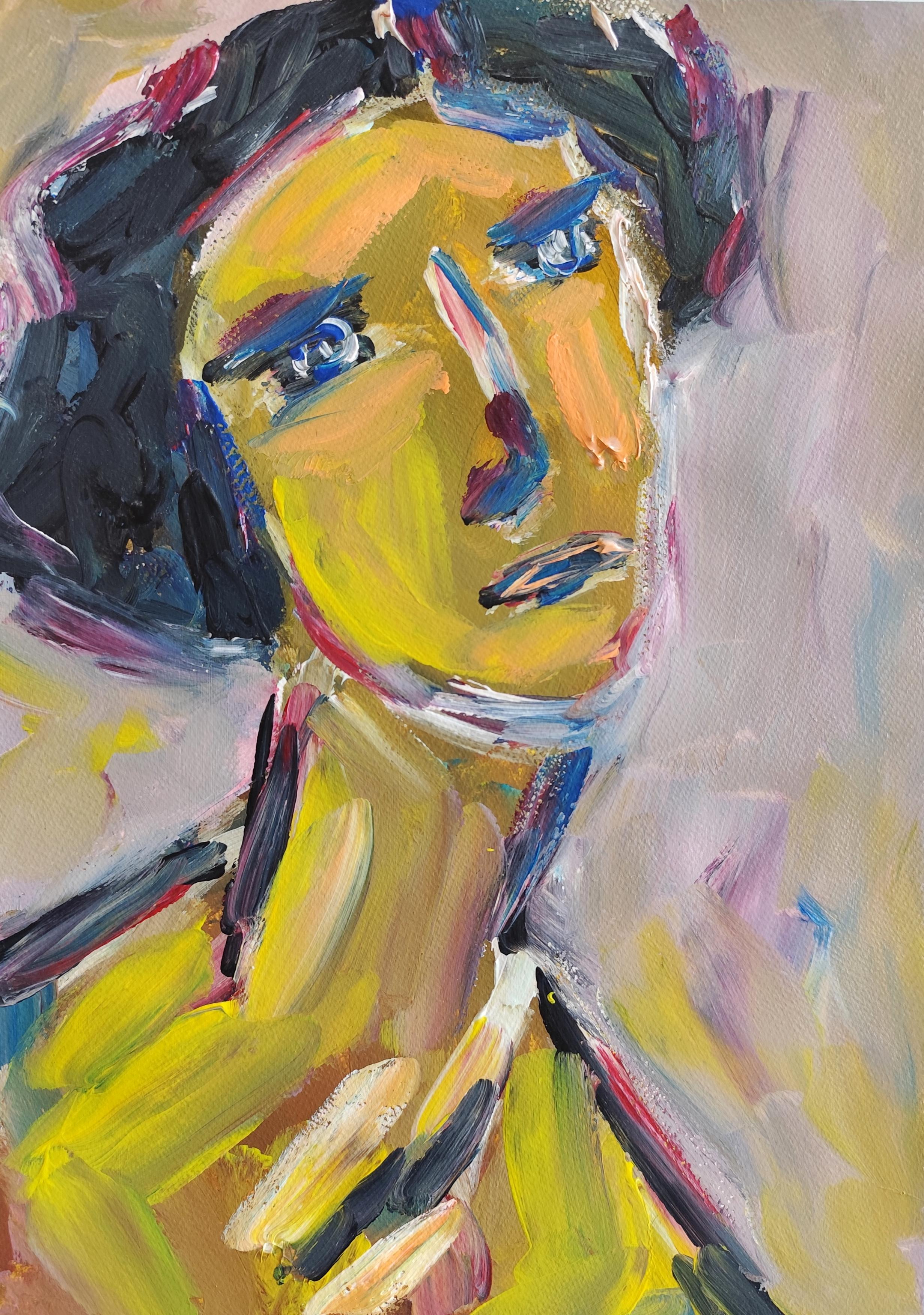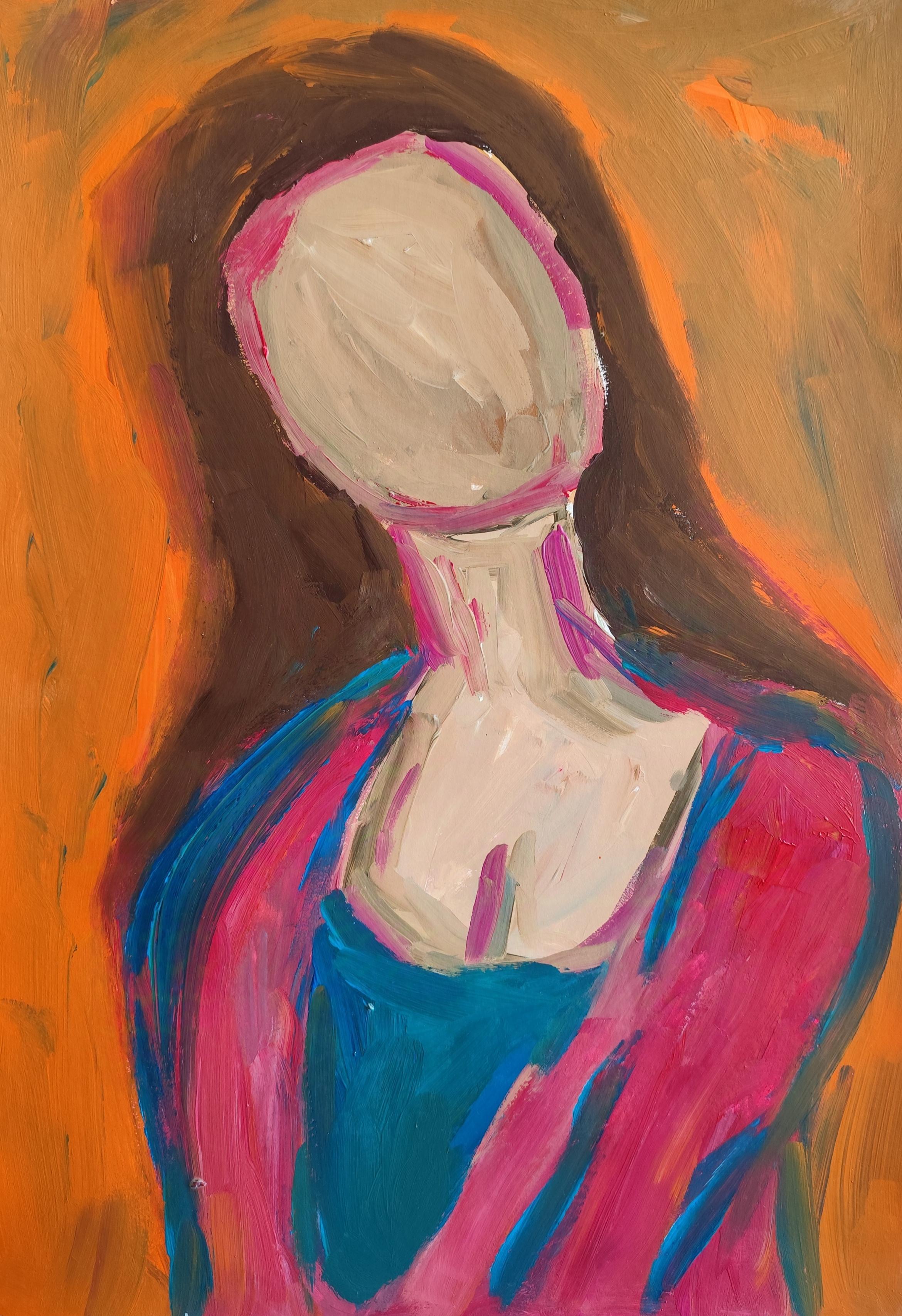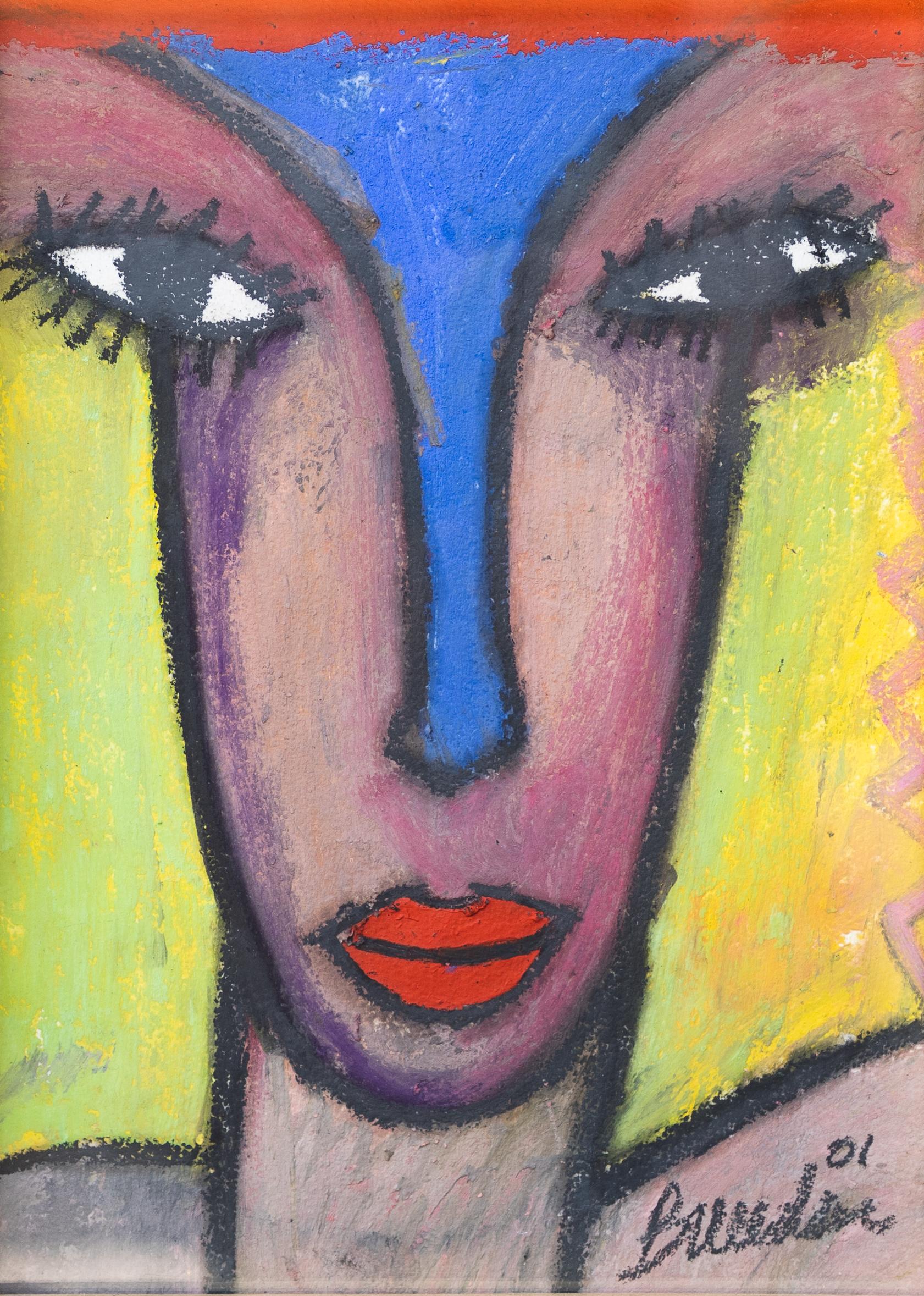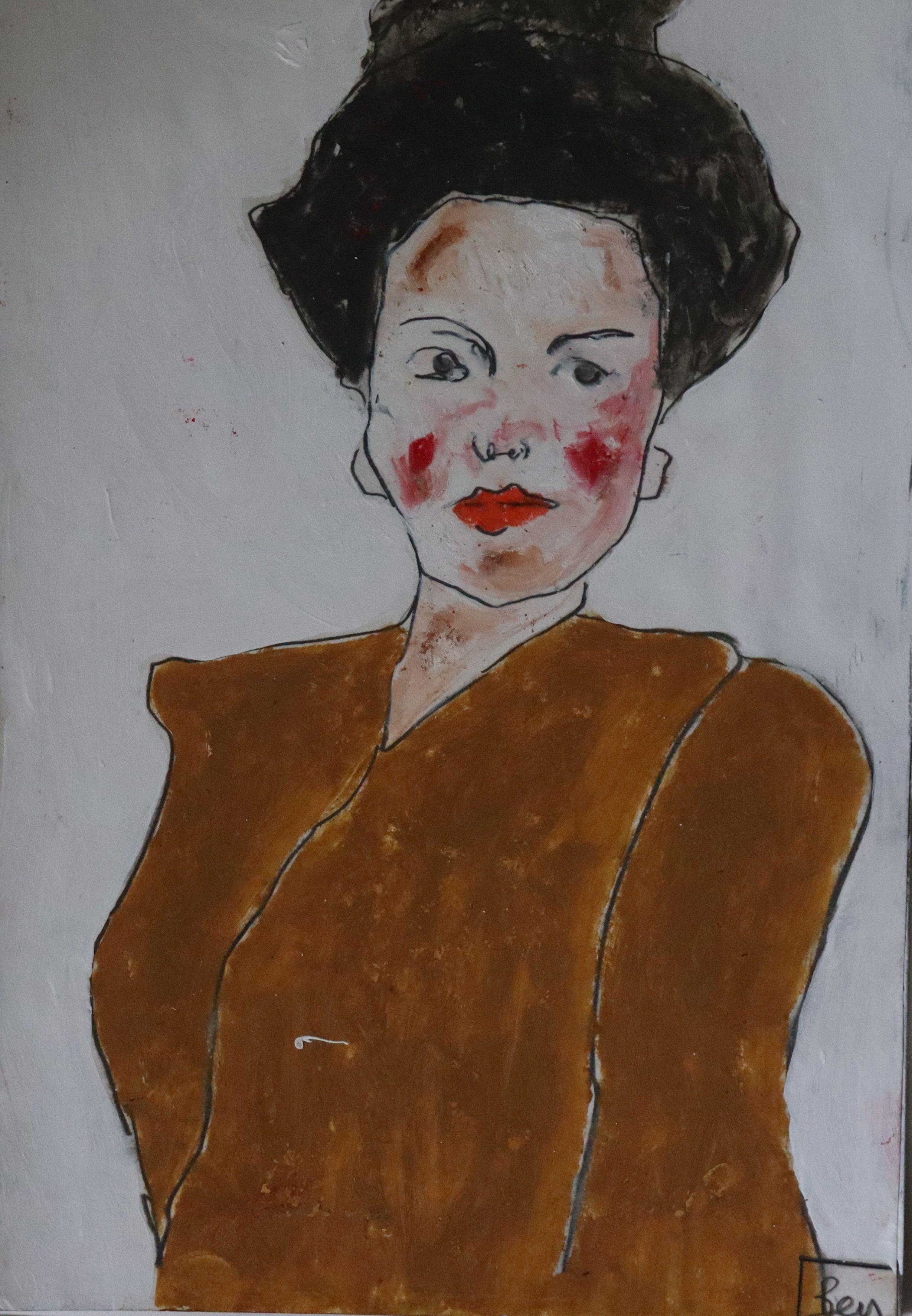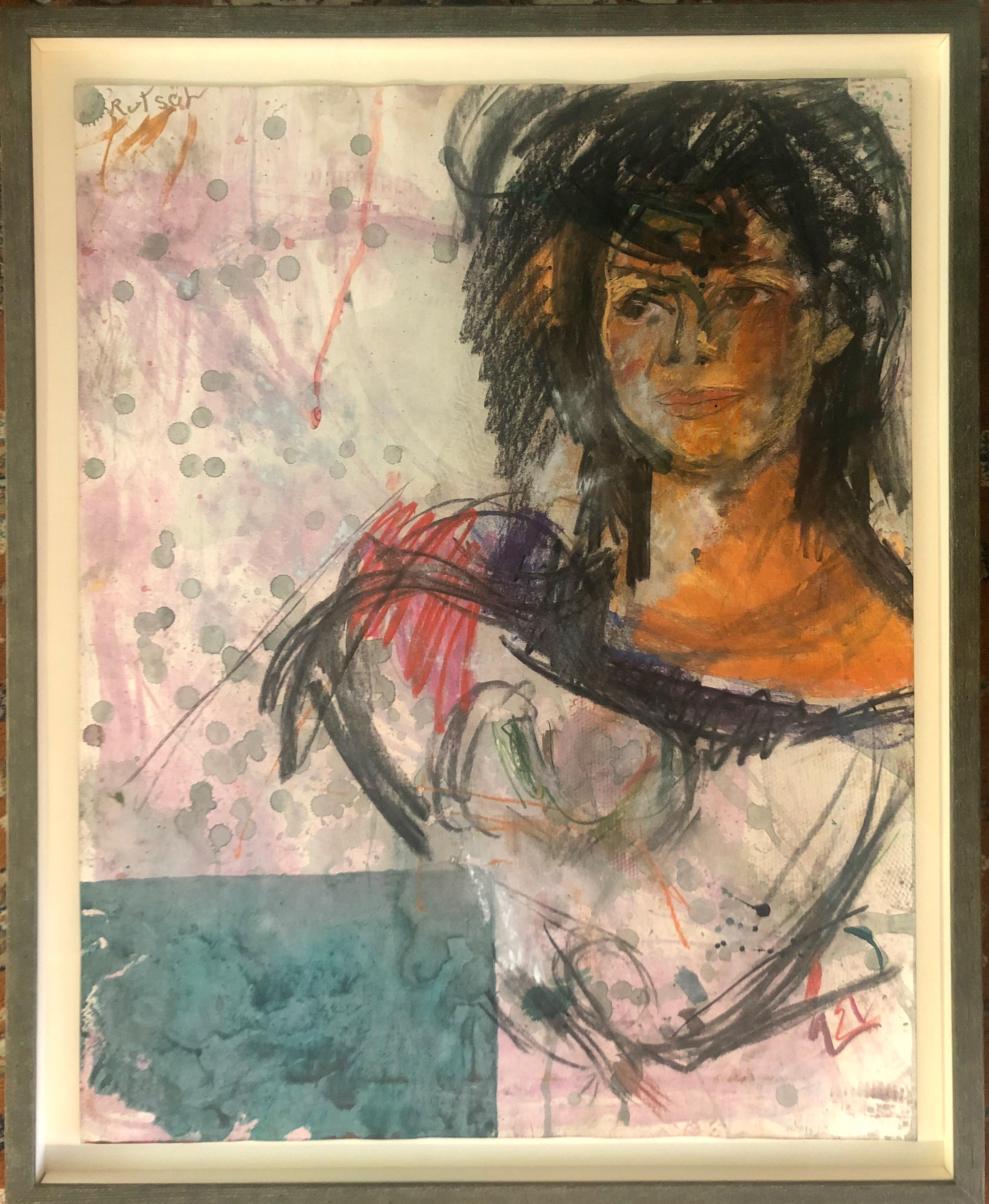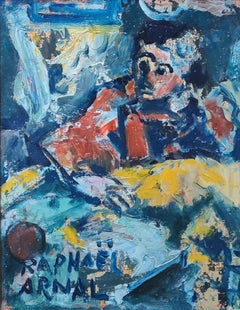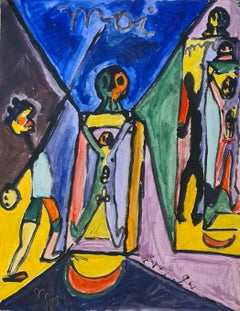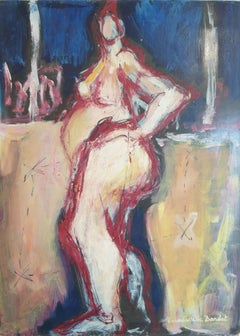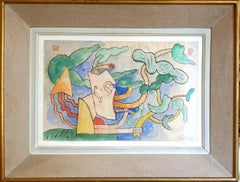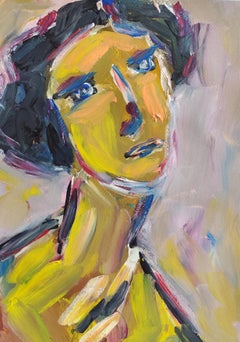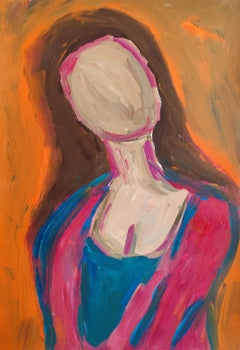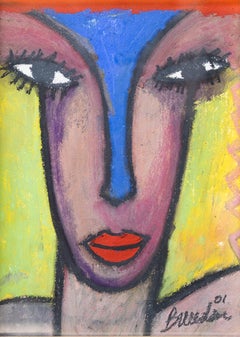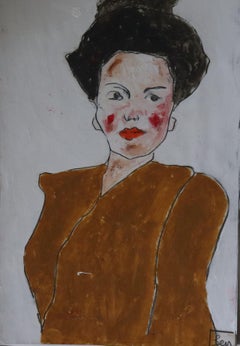Items Similar to Late 20th Century Expressionist Oil and Acrylic on Paper. 'Janine, The Muse'.
Want more images or videos?
Request additional images or videos from the seller
1 of 10
Armand AvrilLate 20th Century Expressionist Oil and Acrylic on Paper. 'Janine, The Muse'.1991
1991
$2,503.58
$3,129.4820% Off
£1,821.33
£2,276.6620% Off
€2,080
€2,60020% Off
CA$3,416.67
CA$4,270.8420% Off
A$3,804.77
A$4,755.9720% Off
CHF 1,980.18
CHF 2,475.2220% Off
MX$46,912.41
MX$58,640.5220% Off
NOK 25,219.04
NOK 31,523.8020% Off
SEK 23,703.46
SEK 29,629.3220% Off
DKK 15,829.77
DKK 19,787.2120% Off
Shipping
Retrieving quote...The 1stDibs Promise:
Authenticity Guarantee,
Money-Back Guarantee,
24-Hour Cancellation
About the Item
A vibrant colourful French portrait of Janine, muse of the artist Armand Avril. Signed and dated mid right. Presented in new contemporary framing under glass.
Armand Avril (1926) is an important French artist, whose distinctive style is influenced by African and Inuit traditions. Avril's works until the late 1960's are characterised by a figurative style of painting, with sensual shapes and outrageously bold colours. Later he created mixed-media artworks, and the influence of Braque, Picasso and Matisse is especially visible in his compositions.
Avril has recently been accorded major retrospectives of his works and his paintings and assemblages are represented in major museums and collections worldwide.
- Creator:Armand Avril (1926, French)
- Creation Year:1991
- Dimensions:Height: 30.5 in (77.47 cm)Width: 24.5 in (62.23 cm)Depth: 1 in (2.54 cm)
- Medium:
- Period:
- Condition:
- Gallery Location:Cotignac, FR
- Reference Number:Seller: LG/Avril/Janine.1stDibs: LU143029019222
About the Seller
5.0
Platinum Seller
Premium sellers with a 4.7+ rating and 24-hour response times
Established in 2000
1stDibs seller since 2020
244 sales on 1stDibs
Typical response time: 1 hour
- ShippingRetrieving quote...Shipping from: Cotignac, France
- Return Policy
Authenticity Guarantee
In the unlikely event there’s an issue with an item’s authenticity, contact us within 1 year for a full refund. DetailsMoney-Back Guarantee
If your item is not as described, is damaged in transit, or does not arrive, contact us within 7 days for a full refund. Details24-Hour Cancellation
You have a 24-hour grace period in which to reconsider your purchase, with no questions asked.Vetted Professional Sellers
Our world-class sellers must adhere to strict standards for service and quality, maintaining the integrity of our listings.Price-Match Guarantee
If you find that a seller listed the same item for a lower price elsewhere, we’ll match it.Trusted Global Delivery
Our best-in-class carrier network provides specialized shipping options worldwide, including custom delivery.More From This Seller
View AllMid Century French Expressionist Oil, La Couseuse
Located in Cotignac, FR
A mid-century French Expressionist oil on paper, laid on board, painting of a lady sewing by Raphael Arnal. The painting is signed bottom left and dated, located and attributed to th...
Category
Mid-20th Century Expressionist Figurative Paintings
Materials
Oil
Late 20th Century French Expressionist Acrylic. 'Moi: Life, Sex and Mortality'.
By Armand Avril
Located in Cotignac, FR
Late 20th century expressionist work on paper by French artist Armand Avril. Signed and dated bottom right.
The painting is full of vibrancy and colour with the depictions and appea...
Category
1990s Expressionist Figurative Paintings
Materials
Oil, Paper, Acrylic
"La Cagole", "The Extrovert", French Abstract Expressionist Oil on Board.
Located in Cotignac, FR
Late 20th century abstract Expressionist oil on board by French artist Emmanuelle Bardet. Signed bottom right and dated 1995 and titled "La Cagole" to the re...
Category
Late 20th Century Nude Paintings
Materials
Board, Oil
'Mother Nature', Lyrical Surrealist Abstract Watercolour on Paper.
Located in Cotignac, FR
Mid-century lyrical surrealist abstract watercolour on paper by French artist Jean Clerté, signed and dated bottom right. Presented in mid-century frame.
Jean Clerté , born in 1930 in Saint-Savin-sur-Gartempe in Vienne, is a French painter, engraver, draftsman, watercolourist and sculptor . This work is a great example of his more humorous and expressive work influenced by Alechinsky from the late 1960s onwards. There is a light playfulness and yet the watercolours are more vivid than his previous palette.
Jean Clerté works in series. His sequential narrations testify both to a youthful spontaneity and to a perfect mastery in the distribution of forms and images on the painted surface. The narration is not only an accumulation of juxtaposed fragments and symbols, it forms a whole, it takes on and gives meaning. In general, we can say of Clerté that he practices an “eco-art” that feeds on primary hungers: the feeling of being united with nature, the vegetable, the mineral, the aquatic. In his colourful canvases, his inks, his boxes, his objects, like a shaman on the path of his dreams, the painter Clerté mounts an assault on beasts and demons, elves and gnomes. From the Poitevin marshes to the tropical forests emerges a fauna caught in the meanders of a design that marvels at the appearance of these grotesque idols.
Jean Clerté began to draw and paint at a very young age, and at the age of 15 he enrolled at the École des Beaux-Arts in Poitiers. Then in 1949, curious about the capital, he moved to Paris. Having very few financial resources, he could not continue his studies at first, worked as a model to survive, and met other artists; he was then admitted to the studio of Ossip Zadkine and, from 1952, he was also able to study engraving at Atelier 17 of Stanley William Hayter, an English engraver and printer living in Paris associated in the 1930s with surrealism.
At the end of the 1960s, he worked alongside Pierre Alechinsky, founding member of the Cobra movement, engraving Alechinsky's originals, benefiting from his advice, and discovering acrylic as a medium.
From 1976, Jean Clerté became associate professor at Hayter. Clerté had taught previously, in 1971 at the Salzburg Summer University and in 1972 he gave courses at the Paris-Sorbonne University . In 1981, he was appointed professor at the School of Decorative Arts , where he had Maïlys Seydoux-Dumas as a student and, from 1983 to 1988, he was Alechinsky's assistant professor at the Paris School of Fine Arts.
His first works are part of the current of lyrical abstraction, and are nourished by impressions of nature (landscape motifs, e.g. forest fires, waterscapes), then around 1968, encouraged by Alechinsky, he rejects abstraction, and his work becomes more figurative with expressive and humorous elements. From this period his colours are more subdued, often with pastel tones, he works on series. Jean Clerté has created a world in a space where drawing, painting, objects participate in a playful figuration. From his drawings were born sculptures and sometimes mobiles (Le Moulin à dessin). If it is the artist who makes astonishing, polychrome, whimsical “toys”, it is the painter who appeals to adults through his caustic and satirical humour.
His first exhibitions in France took place at the Galerie Massol , then at the Galerie Pascal...
Category
Mid-20th Century Expressionist Figurative Drawings and Watercolors
Materials
Paper, Watercolor
Late 20th Century Expressionist, DUBONNET, Self Portrait With Cats
By Armand Avril
Located in Cotignac, FR
Late 20th century oil on paper by the French artist Armand Avril. Signed and dated bottom right.
The painting is an interesting thematic work by Avril inspired by the iconic adverti...
Category
Late 20th Century Expressionist Figurative Paintings
Materials
Paper, Ink, Oil, Acrylic
Abstract Expressionist Acrylic and Oil on Paper
Located in Cotignac, FR
Abstract Expressionist oil and acrylic on paper by Dutch artist Joep Goeting. Signed and dated 1972 to the bottom left and presented under glass in a gilt wooden frame.
An early and...
Category
Late 20th Century Neo-Expressionist Abstract Paintings
Materials
Paper, Oil, Acrylic
You May Also Like
Modern Abstract Expressionist woman's portrait acrylic on paper " True self"
Located in VÉNISSIEUX, FR
This contemporary abstract expressionist portrait of a woman was created by French artist Natalya Mougenot. Bold, vivid, and emotionally charged, the piece—titled "True Self"—explore...
Category
2010s Abstract Expressionist Portrait Paintings
Materials
Acrylic, Paper
Contemporary figurative art abstract woman's portrait acrylic painting on paper
Located in VÉNISSIEUX, FR
This artwork " Woman in a dreamy mood" showcases a bold and abstract portrayal of a figure, characterized by the absence of facial features, allowing viewers to focus on the form an...
Category
2010s Contemporary Abstract Paintings
Materials
Paper, Acrylic
Portrait of a Woman - Expressionist Mixed Media Piece
Located in Austin, TX
Expressionist portrait of a woman by Juan Carlos Breceda featuring purple, blue, green, yellow, and orange. Executed in 2001. Mixed Media.
Framed ...
Category
21st Century and Contemporary Expressionist Portrait Paintings
Materials
Mixed Media
portrait woman, Painting, Oil on Paper
By Benjamin Carrivick
Located in Yardley, PA
Painted in 2021 The painting is mounted :: Painting :: Impressionist :: This piece comes with an official certificate of authenticity signed by the artist :: Ready to Hang: No :: Si...
Category
21st Century and Contemporary Impressionist Paintings
Materials
Oil
Woman posing mixed media painting
By Jordi Curos
Located in Barcelona, Barcelona
Jordi Curós Ventura (1930-2007) - Woman
Mixed technique on canvas board.
Work measurements 46x38 cm.
Frame size 63x55 cm.
Jordi Curós Ventura (Olot, Girona, March 4, 1930) is a Span...
Category
1970s Fauvist Portrait Paintings
Materials
Mixed Media
$312 Sale Price
35% Off
Portrait of A Young Woman Work On Paper
By Alexander Rutsch
Located in Lake Worth Beach, FL
Young Model II Expressionist Portrait
Rutsch is always "scribbling and scrabbling." He is an artist of the purest breed—an artist who has no choice but to paint. He is a chosen traveler of the depths of existence; a man who follows a longing to explore his inner self and relate his findings with the energy and identity of the universe.
The celebrated Austrian artist approaches painting and sculpture as he lives life—with the eyes of a child and the hand of a poet. Constantly in the quest for rhythms of form and vibrations of color, he catches those "sparks in the shadow" and evidences their fullest reality and beauty in his creations.
Each of his paintings is a careful construction as it is a spontaneous act of love. While he might attribute certain artistic expressions to "coincidence," his inspiration comes from such diverse sources as: memories, dreams, sounds, numbers, telephone poles and drift wood. Rutsch has an affinity to vibrant colors, strong contours and rich brush strokes which are apparent in his oils, mixed media works and ink drawings. He has a sensitivity to the unusual, the discarded and a fondness for the ugly as well as the chaotic. These, he often transforms into poignant welded steel abstractions.
Rutsch has an aversion to politics, citing dates and expounding upon honors achieved. There is no talk about 'profound symbolism' in his work and as Carlo McCormick writes in the introduction to Rutsch's monograph, "Meaning is not a seed that Rutsch plants, nurtures and then harvests. It is what grows wild in a volcanic swamp of fossilized, decaying and new-born fancies—as an afterthought and aftershock." Alexander Rutsch is not concerned with interpretations; he is, however, passionate about the process of making art and surrenders his entire being as an instrument to the act of creation.
The geometry of his imagination overflows with figures, profiles and penetrating strong eyes—windows to a deeper place. Their vitality and sensuality pulsate through the "dreamscapes" of Rutsch's created worlds. At times romantic, yet always wild with energy, human forms and experiences are essential to the artist's vocabulary.
The son of opera singers and a singer himself, Rutsch speaks of "the art of painting as the art of silence" and the job of the painter "to dedicate himself to the silence." He adds though, "that this silence is the greatest existing sound in the universe." One wonders why then, if painting is "the art of silence," that Rutsch's paintings scream with sound. Sometimes melancholy, sometimes sensual, sometimes dissonant and sometimes whispering, the rhythms are always rich in the celebration of life and our shared humanity.
Painter, sculptor and poet, Rutsch's oeuvre over the past four decades is tremendous. Celebrated and collected especially in Vienna, Paris, Brussels and New York, he studied with renowned teachers like Boeckl and Dorowsky and collaborated with such geniuses as Salvador Dali. Having left Vienna in the fifties, Rutsch moved to Paris and took the city's art scene by storm. There, Picasso was so enthralled with a portrait Rutsch has done of him that, in a state of great excitement, he countersigned it.
Biography
Alexander Rutsch was born in Russia in 1916 but raised in Belgrade, Yugoslavia. After studying voice in Austria he became an opera singer like his parents, but after WWII, Rutsch's love for visual expression propelled him to change careers. He was a painter, sculptor, philosopher, musician, singer and poet. His life as a romantic is reflected in his work, as he sought to perfect his soul and humanity, "I paint my dreams," said Rutsch.
"My dreams are color and life. They soar in my head like millions of symphonies. I can never stop building dreams."
In 1952, after studying under Josef Dobrowsky, Josef Hoffmann and Herbert Boeckl at the Vienna Academy of Fine Arts, Alexander Rutsch received a scholarship to study in France. There he made contacts and began collaborations with his contemporaries, Picasso and Dali. Rutsch said of his experiences with Picasso, "Picasso played a short but important moment in my life in Paris that affected my entire artistic future. I learned from him that it is not important if art is not aesthetically finished. It can be raw, uncooked, rough. If an artist feels he has said it—it is not important to polish or finish it. Because of Picasso, I learned that if I don't feel the need to finish—I don't have to." In 1954 he exhibited his work at the Salon Artistique International de Saceux and won first prize for abstract painting, the first of may awards received during his prolific career.
During the 13 years he lived in Paris, Rutsch exhibited in many prominent galleries there and throughout Europe. In 1958, The City of Paris awarded him the prestigious Arts, Science and Letters Silver Medal. In 1966, Jean Desvilles presented his prize winning film "Le Monde de Rutsch" at the Cannes Film Festival and the Venice Biennial. In 1968 Rutsch moved to Pelham, New York where he continued to work in his studio and exhibit in galleries and museums worldwide.
Rutsch's work, as seen through his mastery of many art forms—sculpture, painting, print-making, and drawing, and a wide variety of other media has been described as "vibrating showers of lines, bold geometries, wounded anatomically rambling scrap-wood skeletons...
Category
1980s Expressionist Mixed Media
Materials
Charcoal, Oil Pastel, Watercolor
More Ways To Browse
David Hockney Brothers Grimm
De Jonge
Delta Poster
Diana Ross Photography
Dove Cage
Duchess Of Marlborough
Eiffel Tower Dress
Elegant Large Nude Oil Painting
Eliot Porter
Elmer Schooley
Emilie Arnoux
Emprunt National
George Schultz
Giacometti Bird Table
Giorgio Armani 2001
Goddess Kannon
Guido Crepax
Guitarist Sculpture
